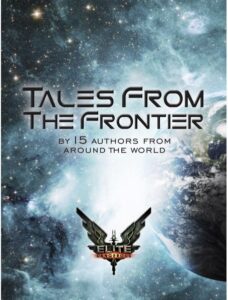 What Remains Of Edith Finch (Remains) is an explorable story by Giant Sparrow. It’s ‘told’ from a first person perspective as you (initially as the Edith Finch from the title) return to the Finch’s family home, seven years after her Mother moved them away.
What Remains Of Edith Finch (Remains) is an explorable story by Giant Sparrow. It’s ‘told’ from a first person perspective as you (initially as the Edith Finch from the title) return to the Finch’s family home, seven years after her Mother moved them away.
Remains is similar to Dear Esther and Gone Home in that walking around triggers bits of the voiceover/story. However it’s a little closer to Everybody’s Gone To The Rapture in that there are actions you need to take and small puzzles to solve in order to progress.
You begin on the unkempt driveway, just past a chainlink fence. The driveway takes you through a heavily forested area, and you immediately get the impression that things haven’t been maintained – or used – for a while.
One interesting conciet you’ll notice almost immediately: every spoken word has ‘subtitles’. However, these are playful things, and don’t usually go at the bottom of the screen. Often they become part of the scene – resting on a gate, framing an entranceway, or even sitting jumbled until you can untangle them. It’s a brilliant, well executed idea that really adds to the whole, that somehow hovers the line between breaking immersion, while dragging you further into the story.
As you walk, you get enough history to know that Edith is walking to what is now her house, the Finch’s Family house, after her mother died. She hasn’t been back for seven years. She knows there were a lot of family secrets that her mother kept hidden from her, and she’s hoping the house will help her learn what those were. The only thing she has to go on is a key her mother left for her.
The somber, run down look of the place sets the mood instantly. You can feel that no-one has driven this driveway for years. You can tell that the house hasn’t been loved for at least that long. The fact that it seems to be near end of day, with lower light, enhances that.
The scenery and understated soundscape really pulls you in. The house has a wonderful mixture of relatively new equipment ( flat screen TVs), along with the sense of age of an old property. Just like many older houses that are still hosting families today. Really, my first thought on getting into the house was “this is familiar”. My second thought is “I want this house”.
The atmosphere is forboding, which suits the tone of everything to come. Most of the rooms, and even the above floors, are locked tight. It’s only after you find one open bedroom that you can begin to unlock the secrets of the house.
The controls help here and, for the most part, mimic what happens on screen. You want to wind up a music box? Rotate the thumbstick. You want to open a book, move the thumbstick in the direction that the cover opens. Every now and again the direction is counterintuitive to me, but it mostly gets it so right that I barely think about it.
As you explore more, you begin to learn about the family that inhabited the house, and fill in the family tree in the notebook carried with you.
For almost every person there’s a story, and you become that person in the story.
These stories are where the game gets to explore the format more. In one story you’re a series of animals. Another story is told in a mixture of comic book panels, and comic shaded first-person. Yet another begins as a top down old school dungeon crawler.
They even experiment with the controls. In one beautiful sequence there are two worlds overlaid, with one thumbstick controlling one world, and one the other world. It sounds complex, but the way its presented matches the story perfectly, and drags you further in.
The word ‘macabre’ comes to mind with the stories. They all end in death, or ‘unknown consequences’ for the person involved. Are they all true? That’s up to you to decide.
The story slowly takes you around the large, heavily added to, house, out into the grounds, and more. Each person, each story, has its own feel and atmosphere, but there’s always that sense of foreboding – along with a lot of dark humour1.
By the end of it, you’ve grown to know the family, and the titular Edith, quite well. The ending is … ambiguous, but not annoyingly so, at least to me.
And, as with any good Explorable Story that grabs me, I’ve begun a second go around.
Of course, nothing is ever perfect, and there was one, minor, nitpick.
It’s noted that the power was turned off the night they left – as evidenced by flicking the nearest light-switch and nothing happening. Yet later on, various lights are found to be lit. It might be this is meant to flag that things are getting surreal, but it didn’t feel that way to me. Only one set of lights made sense, the rest, well I suspect even the solar powered ones would have dead batteries by now.
Still, beyond that, I love the stories and I love the way the whole thing is executed. I’m really glad to see those “writing” these Explorable Stories are playing with the format and slowly working out different ways to use the unique methods that the console/PC offers.

